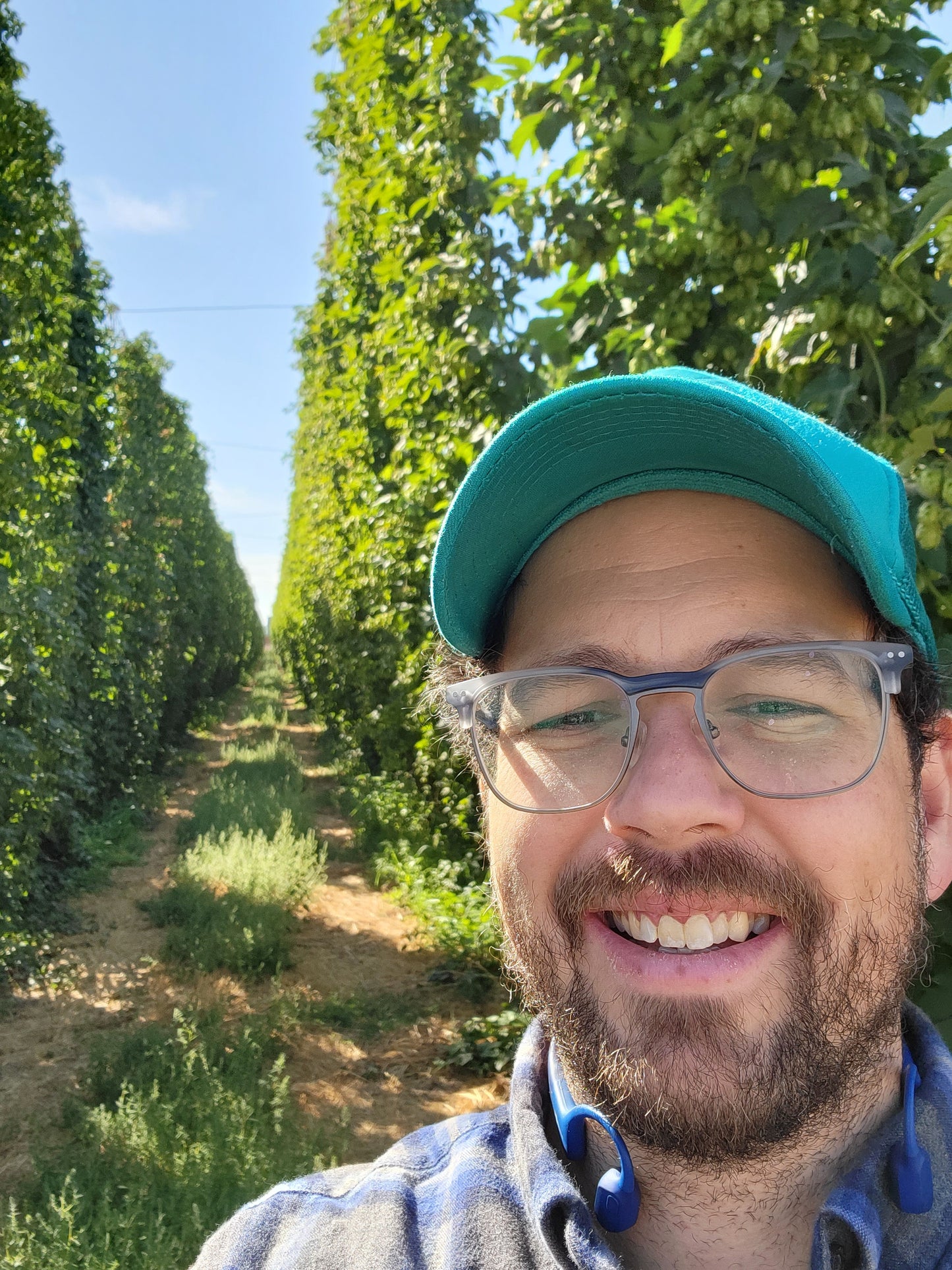
Ever wondered what's involved in chasing fresh hops? Curious how brewers make decisions on what beer to brew and what hop to use? Yes? Well then keep reading. If not, well that's just fine, too--we get the whole TLDR thing, but just can't help ourselves.
Anyway, based on Aaron's plan for fresh hop season, our first foray found us chasing Centennial hops at Crosby Hop Farm in beautiful Woodland, Oregon--at the northern end of the Willamette Valley. We should mention, Crosby Hop Farm has a couple of unique elements in that it is a certified Salmon Safe farm, as well as certified B-Corp. They are titans with a great reputation in this industry, and we are proud and honored to be brewing with their hops!
Tuesday, August 23rd - 5:15am
Brewery parking lot, coffee, and full-gassed refrigerated van. Aaron, our head brewer and Tim (catch-all marketing guy) made the drive down together. The first thing to know about fresh hop season is that it's highly-choreographed. The hops are ready when they're ready. Weather, temperature, moisture content of the hops, and maturity of the hop oils all play into it. So, you might get a call or an email on a Friday, telling you to come next Tuesday. This means you drop whatever you had planned for Tuesday, because the hops wait for no one. They are highly sought-after, and highly fragile. The other thing to keep in mind is that a working hop farm is highly-operational during picking season. Trucks are out in the field, and then quickly return to the processing facility so that they can be quickly distilled down to whole cones and bagged for transport. We could try to give you the finer details of this process, but it can aptly be described as Willy Wonka's Chocolate Factory--for beer. Mechanical marvels abound--just check out these pictures:

Above: Bines are picked from the bineyards (that's a word, right???) and then are manually placed on hooks that carry them up to the machinery that remove the whole cones, where they're immediately placed into refrigeration to cool. Once cooled, they are placed in bags for pickup. They were literally bagging ours up when we arrived!
Indeed, orchestrated chaos. Breweries are assigned a 15-minute pick-up window, and there is a constant stream of arrivals and departures. By 9:30am we were already on our way back. It’s worth noting that our van is completely sealed in the cabin from the fridge in the back, but science be damned, Aaron says it reeked like his house in college. Draw your own conclusions.
As compared to the Willamette Valley, the hop profiles of all of the standard hops that you could purchase in the Yakima, Washington region have a bit different flavor notes. And believe us, we will be brewing with Yakima Valley hops this fresh hop season; just later in the cycle! As for Crosby in particular, Centennial, Amarillo, Comet and Cascade have always been some of Aaron's favorite varieties from this farm. Aaron had historically done the most with Sterling off this farm during past fresh hop seasons, because it’s just one of the few lager hops available to try to fresh hop with. Does that mean we should have done that hop for our lager after all this? Aaron says no, because Centennial used with restraint and with good methods delivers a lovely floral character, just like a European hop would. The bitterness is really clean from Centennial, so we could distinguish the gentle Saaz bittering that was done.
All that said, we can't wait to share this Centennial fresh hop pilsner with you! It will be the first of our four fresh hop beers this season, and we'll share more details about it in the coming days!
READY TO ORDER YOUR FRESH FEST SUBSCRIPTION? CLICK HERE!



